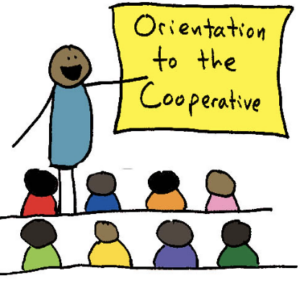
There is no one definition of cooperative but a cooperative enthusiast might say that any organization that is committed to and practices the 7 cooperative principles is a co-op. Cooperatives can manifest in many ways and there is no one right way to start or structure a co-op. In this section we will focus on the basics of how cooperatives work and how they are structured.
Where to start:
How Cooperatives Work
While there are many similarities to traditional businesses, cooperatives operate differently both legally and in practice. According to the International Cooperative Alliance, a cooperative “is an autonomous association of persons united voluntarily to meet their common economic, social and cultural needs and aspirations through a jointly-owned and democratically-controlled enterprise.” Cooperative businesses are often based on
How Cooperatives Are Structured
Cooperatives are member-owned and democratically controlled businesses that distribute profits based on an equitable patronage system. Cooperatives are structured by type of cooperative, the tax status and the legal entity that is chosen by its members. The decision depends on the mission and needs of the co-op. Difference between Co-op Type, Legal Entity and Tax
Types of Cooperatives
Like regular businesses, there are many different types of cooperatives. But co-ops are unique because they exist to serve the needs of their members first. This means that a coop’s purpose directly informs the way it operates and the way it’s structured. Let’s take a look at some of the most common types of co-ops.